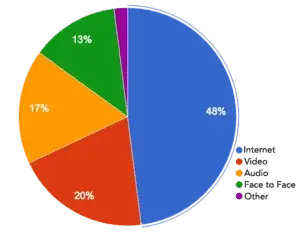MedSafe Coding Audits Program
Home » MedSafe Coding Audits Program
MedSafe Coding Audits Online Training
MedSafe has invested the time and resources required to make your Coding Audit training experience a success. We have designed custom trainings that accommodate the new Coding Audit standards, with a focus on medical specialities.
MedSafe is proud to offer Coding Audit training and has adopted a system of “Specialized Training Modules” to better suit the needs of health care professionals who desire (or are required) to train for Coding. Due to the complexities and additional documentation requirements of Coding, MedSafe has created this series of online training modules for most of the medical specialties. These modules provide an overview of the Coding requirements and best practices. Each module also reviews the top ten to fifteen codes for that specialty and how the previous code converts to the current code(s).
The new code laid down by the current variant has its roots in previous versions of the standard; however, there are many changes and localized alterations and additions. Training for Coding audits is an amazing opportunity for those looking to improve their understanding in medical specialties. Those who wish to gain a deep knowledge of the insights provided by the standard can benefit immensely from the program we have designed. Specialties include: Cardiology, Emergency Medicine, Endocrinology, Family Medicine, General Surgery, GI, Internal Medicine, Neurology, Neuromuscular, OB/GYN, Pathology, Pediatrics, Pulmonary, Urology, ENT, Rheumatology, Hospitalists, Allergy, Behavioral Health, and Psychology.
Preferred Coding Learning Styles

What is Coding?
International Statistical Classification of Diseases and Related Health Problems, or, more simply, International Classification of Diseases, is the tenth version of a world wide standard. The standard is upheld by the World Health Organization which publishes and updates the list regularly and is responsible for the vast majority of the content and information you will encounter when learning about Coding Audits.
The fundamental concept behind Coding is to help those who are employed in the medical industry worldwide to have ready access to, and a solid understanding of, many different points of data related to various diseases and other health issues. It contains codes for diseases, signs and symptoms, special cases and findings, social circumstances, and external causes of injury or diseases, etc.
United States Version of Coding
This list is composed and distributed by W.H.O. However, most countries that adopt the Coding standard make modifications to accommodate local conditions and national healthcare requirements. This is true of the United States. The U.S. uses a version of this iteration of Code which is labeled IDC-10-CM and contains alterations from both the Centers for Medicare and Medicaid Services (CMS) and the National Center for Health Statistics.
The current version being used in the U.S. expands the code base from about 14,000 (previous rendition) to somewhere near 70,000 codes. This has been met with mixed reactions from the medical community, but the general consensus is that the expanded code base gives medical professionals insights into a wide range of medical practices, diagnoses and techniques that are critical to the health of the public.
Ready to Get Started?
Contact us today to learn how we can help your practice maintain complete compliance.